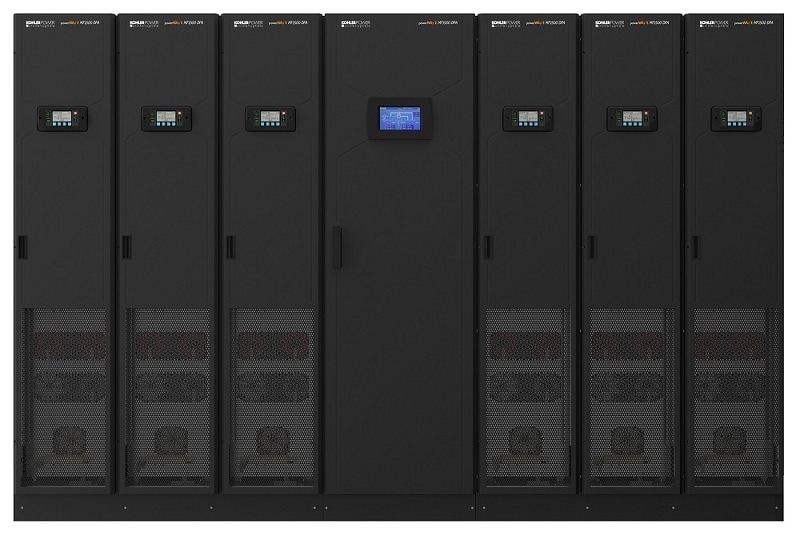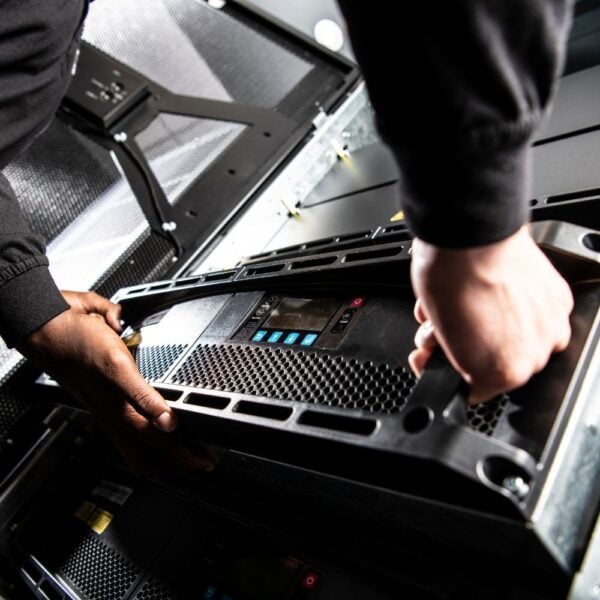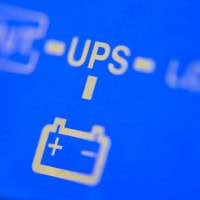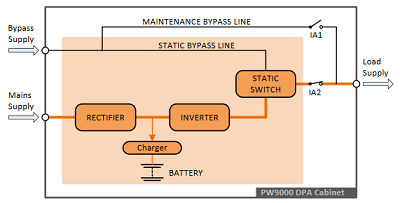Modern data centre operations consume huge amounts of energy. One recent report estimates that they will consume one-fifth of the world’s electricity by 2025[i]. Uninterruptible power supplies, as major equipment items, contribute significantly to this demand; accordingly, any strategy that improves UPS energy efficiency will have a major impact on both sustainable and cost-saving data centre solutions.
Fortunately, various techniques are available to optimise UPS efficiency under all conditions, as demonstrated in modern, modular UPS systems like KOHLER Uninterruptible Power’s new KOHLER MF Series. Exceptionally resilient, flexible and scalable to 6MW, the new modular UPS system offers best-in-market VFI mode energy efficiency.
When double-conversion on-line UPS power supplies first appeared in the seventies, they used transformer-based designs. However, advances in power semiconductor technology have facilitated a general industry move towards transformerless UPS systems. This has brought several advantages, including some related to UPS efficiency.
Firstly, the topology is inherently more efficient. Even at optimal, near full load conditions, transformer-based UPS designs remain well below 95 percent – and as the load reduces towards 25 percent, efficiency approaches just over 85 percent. By contrast, the KOHLER MF Series can achieve efficiencies up to 97.4% VFI, reducing environmental impact, optimising PUE measures and delivering significant financial savings in energy and cooling costs.
However, the benefits extend further; the considerable size and weight reductions achieved by transformerless UPS designs mean that complete UPS solutions can be implemented as small, rack-mounting modules rather than as large, monolithic units.
This comprises the uninterruptible power supply supporting, say, a 500 kW load; it would use two of its 250 kW modules – or three, to provide N+1 redundancy. Then, if the load increases, incrementing the UPS capacity by sliding in another hot swappable 250 kW module (vertical scaling) is cost-effective, easy, and can be done without even interrupting power to the load. Further capacity can be provided by horizontal scaling, i.e. adding more battery racks in parallel.
Note that both benefits – redundant capacity and scalability – are achieved with minimal excess UPS capacity, space and cost, due to the modules’ granularity.
By contrast, a monolithic UPS system typically has to be significantly oversized for future-proofing. Additionally, N+1 redundancy must be implemented using two complete UPS power systems, so neither can ever be more than 50 percent loaded even in the best case. These factors force the monolithic system to work with low loads, where efficiency drops away sharply.
Designed with a clear goal in mind, the KOHLER MF Series modular UPS system is designed to define that reliability does not require excess, and high power can exist alongside efficient use of energy. The new modular UPS system combines proven Decentralised Parallel Architecture (DPA™) technology with the latest advances in components and software. This includes high performance materials for the coils core and its smart mechanical cooling design for booster and inverter sinks, reducing heat loss and extending the component lifetime.
To meet ever-increasing pressure to curb power consumption, uninterruptible power supply users must avail themselves of every technique to improve energy efficiency. Their best option is to choose a UPS solution that not only benefits from modern, modular transformerless UPS topology, but also maintains high efficiency levels under all load conditions and has high-quality energy-efficient components.
To give an example of the likely cost saving, in a 1.5 MW UPS installation, over 10 years the 0.7% extra efficiency of the KOHLER MF Series versus a competitor at 96.7% can save over £150,000 in electrical and cooling costs.
A consultation with an experienced UPS supplier like KOHLER Uninterruptible Power is always recommended, as they can advise on the options and suggest optimum UPS power solutions for energy efficiency. Contact us here.
Reference
[i] https://www.powerengineeringint.com/2019/03/14/getting-a-grip-on-data-centre-costs-and-efficiency/
Originally posted for Mission Critical Power. February 2021





